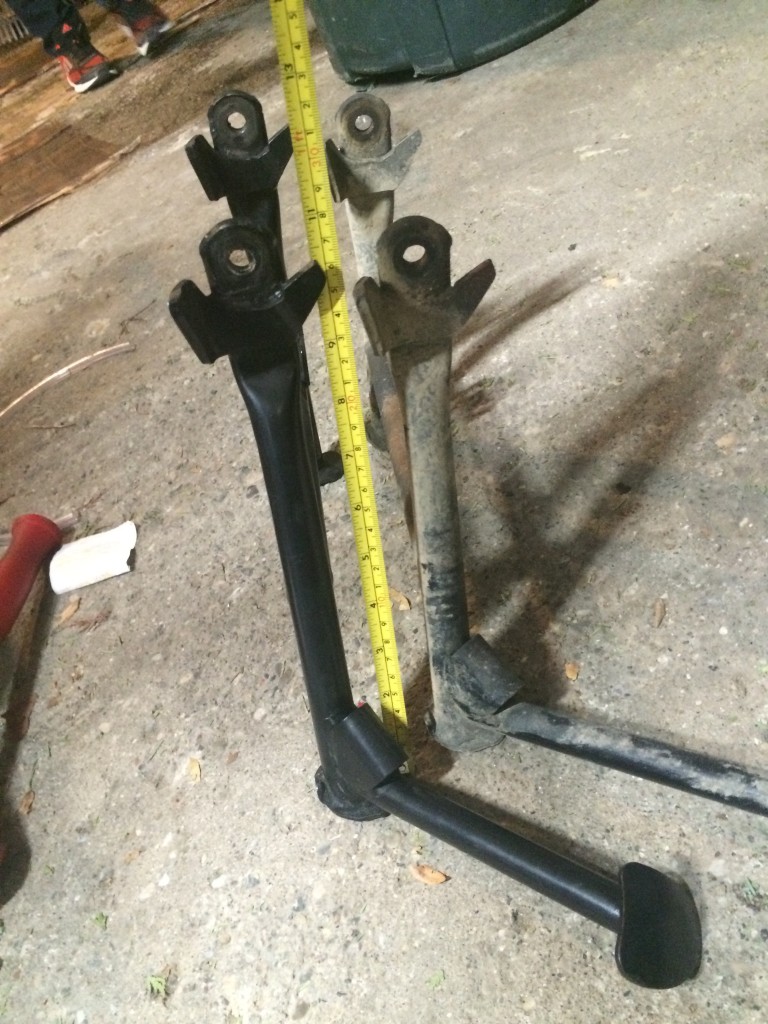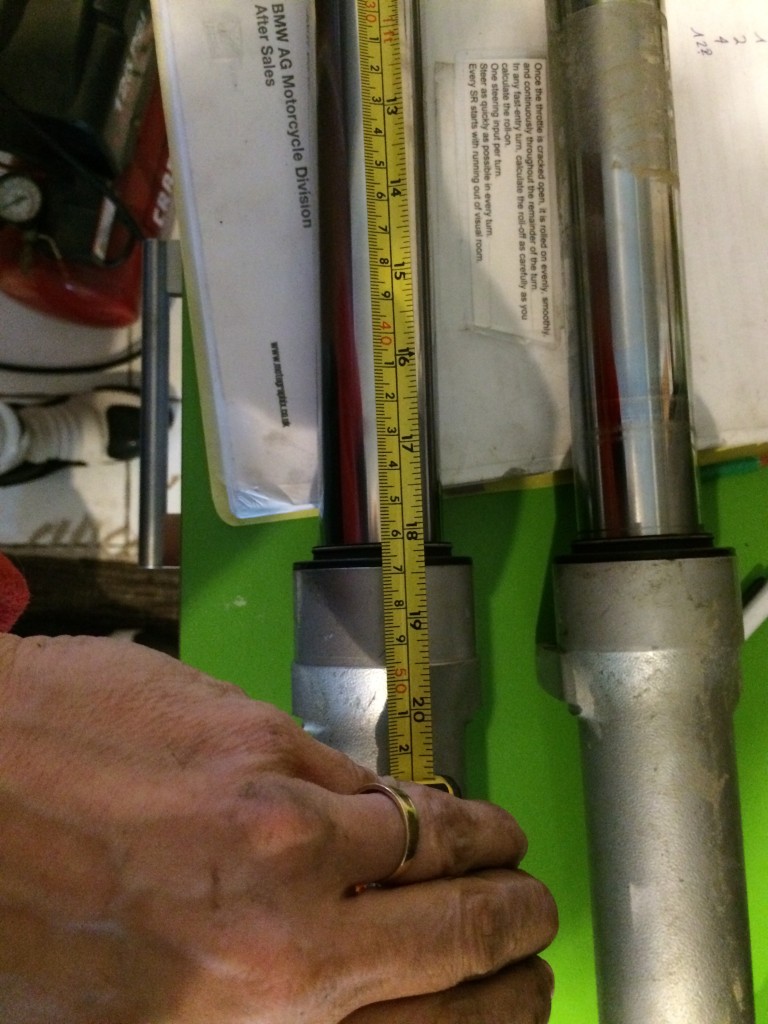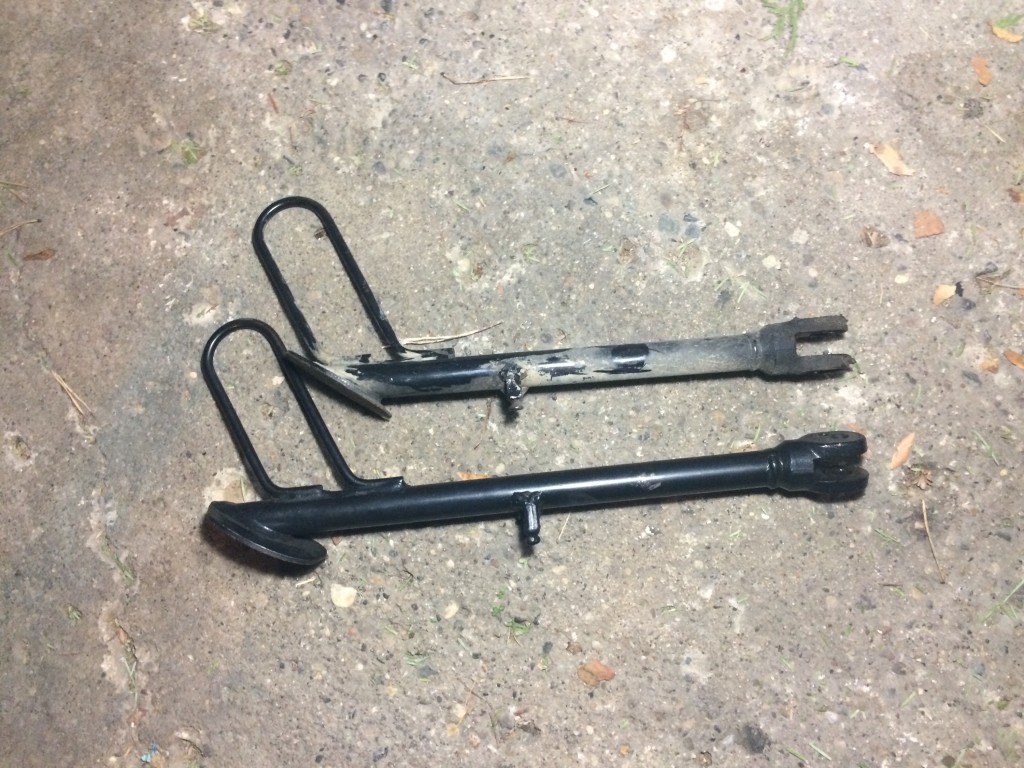I’ve commented in the past about my low GS. It’s now a thing of the past. The low part, not the baby GS part.
Christmas this year brought me one of those über-cool Santa gifts – a set of used normal height stock suspension to replace my stock low suspension with. Fork tubes, center stand, sidestand, and rear shock for the princely sum of $700 from a trusted parts guy. Of course, the fork tubes are US spec, and have the ugly reflectors, but I will live.
What was important to me up front was to understand the various differences between the two suspension sets. On the low setup with preload fully hard, I had close to 1.25″ of space between my butt and the seat when standing over the bike. I never measured sag, but it was at least an inch or so. My knees were bent when sitting at a stop and I felt that I missed some stability due to that. For some reason, I feel more comfortable with my legs extended and less bent when stopped.
First, the centerstand. When modifying suspension up, one needs a stable means of holding the bike up. As the swingarm will have to be moved around a bunch, a centerstand is quite useful. So it is replaced first and the bike pulled up onto it. In my case, the new centerstand is one inch or 25mm longer than the old one. I realize now that this is a terrible picture, but you can get an idea of the difference.
Next are the fork tubes. The fork tubes are also longer by an inch on the slider end. This is effected by using a different size spacer inside of the fork for each set. The actual lowers and sliders (and springs and so on) are all the same. This is actually very cool on BMW’s part because the suspension behaviour does not change very much from low to normal. Once the fork tubes are in, the bike is now at “full” height from centerstand forward.
The rear shock exchange requires lifting the rear frame and gas tank. This requires removing the exhaust. I swear, everything substantive on this bike requires removing the exhaust! But it’s relatively easy to do and gives me a chance to clean up any mud or other dirt under there. The shocks are not as different, although too late I realize that the preload settings were completely opposite. I need to let the preload off of the short one and eventually remeasure. The shocks are about 0.5″ different, which results in roughly an inch of difference in the bike due to the geometry of the swingarm.
Lastly, the sidestand is replaced. What a PITA, BMW. Even with a new bolt, the new sidestand is just as wiggly as the old one. The new switch clip is more interesting to install, also. But on it all goes, and now I can get on and off the bike. The sidestand is also one inch longer.
All in all, I think I have about four hours of effort in. The centerstand took about fifteen minutes, the forks about fifteen minutes, the sidestand about a half hour due to fussy springs, and the rear shock took the rest of it, which included much cleaning and scrubbing time. To do it again, I think three hours tops, closer to two.
So, what is the final verdict? Suspension swaps are pretty simple tasks. I’ll write about riding on the new suspension in a separate post. Here’s the result.







